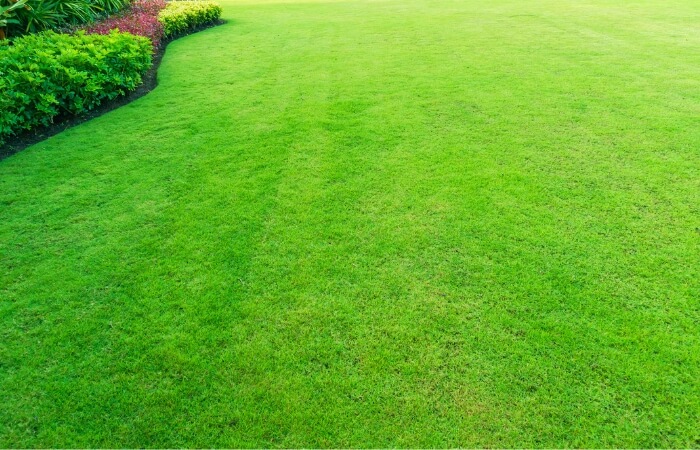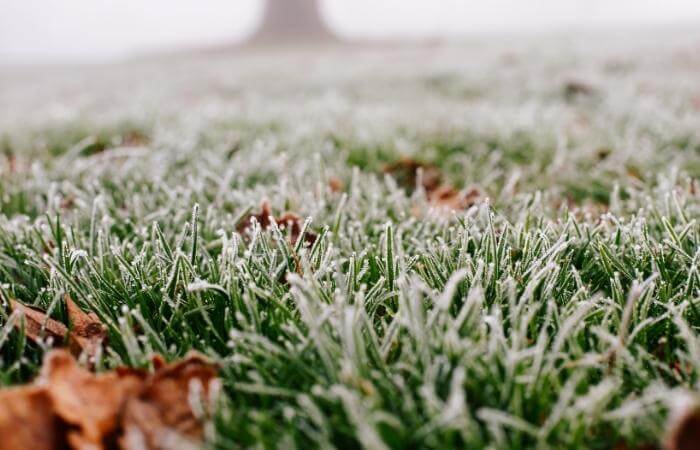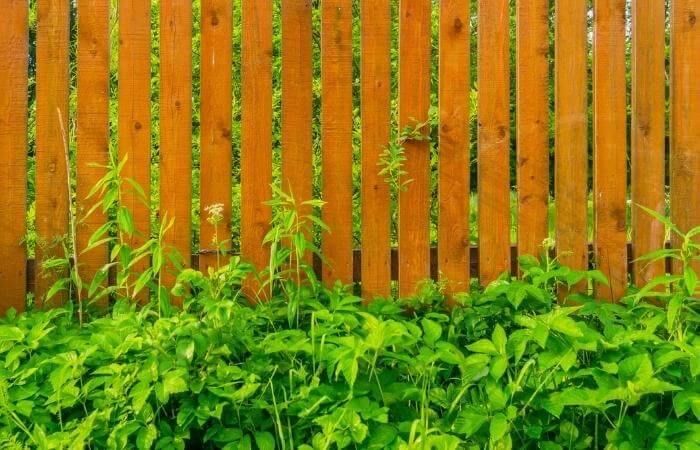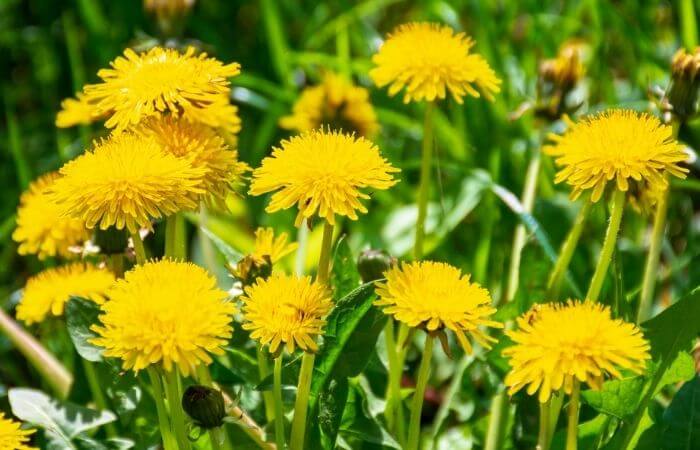Brown, patchy grass ruins the curb appeal of your home, but many homeowners don’t know why their grass is turning brown or how to fix it.
There are several reasons your grass is turning brown, and luckily there are methods to make it green again.
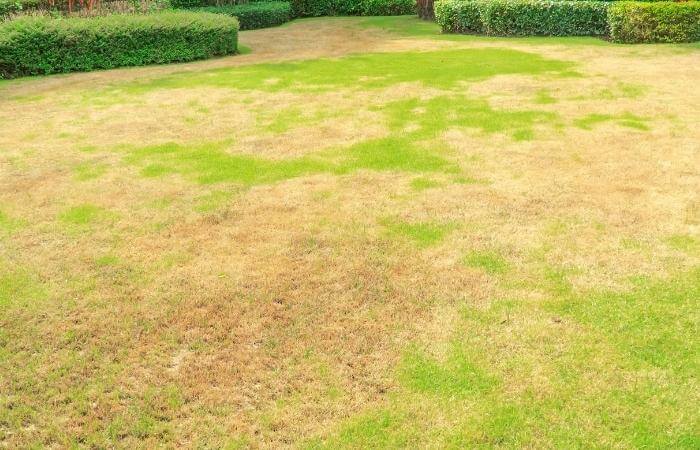
To help you learn all about fixing brown grass, this guide details why it happens and what steps you can take to return your lawn to a lush, healthy green.
Don’t suffer an ugly yard full of brown grass. Treat it right by following the tips below!
Why Is My Grass Turning Brown?
Most homeowners expect their yard to turn brown during winter, as cold temperatures force many grass species into dormancy.
But what causes brown grass at other times?
The main reasons grass turns brown include:
Excessive Heat or Sun Exposure
Drought or scorching conditions trigger many turfgrass varieties to go dormant to protect the roots from permanent damage.
Lack of Proper Watering
Lawns require an inch or two of water a week to remain healthy. Without rain, many homeowners neglect to water their yard enough to prevent browning grass.
Over or Under Use of Fertilizer
Poor soil conditions are another reason grass turns brown. Without ample nutrients, your lawn cannot sustain a vibrant green shade.
You can also overfertilize the lawn, which burns the grass blades or stresses the plant roots, causing brown patches.
Insect Infestation
Grubs love to munch on the roots of grass and cause patches of your lawn to turn brown.
Animals that eat grubs will dig up your lawn, causing double damage to your yard’s appearance.
Chinch bugs are another common lawn pest that will feast on your lawn, turning the grass yellow before turning brown.
Weeds
Weeds can take hold within your lawn and crowd out grass, sapping them of the nutrients and moisture it needs to live. Patches of weeds will usually have rings of dead grass surrounding the plant.
Disease
Lawns suffering from a fungal disease will have large patches of grass with a coating of brown, black, or even white material, with the underlying grass dying off.
Pet Or Foot-traffic Damage
Consistent foot traffic from people or pets crushes grass blades and prevents proper photosynthesis, turning the area brown.
Pets who urinate in the yard will cause round spots of dead grass from acid in the fluid.
Why Does Grass Turn Brown In Winter?

Dormancy in the grass is a natural part of its life cycle and usually happens in the winter.
As the grass hunkers down to deal with freezing soil and lack of moisture and sunlight, the lawn turns brown, but it’s not dead.
You should be aware that cool-season and warm-season grass varieties go dormant at different times of the year.
Warm-season grass blends brown off in the winter as temperatures fall below 50° F, while cold-season grasses turn brown in the summer when temperatures rise above 90° F, especially in lawns lacking water.
Technically, cool-season grasses don’t go dormant in the winter but instead create complex sugars that act as an antifreeze keeping the plant in a suspended state until weather conditions improve.
What Kind Of Grass Turns Brown In The Winter?
The most popular varieties of grass that turn brown in the winter are:
- Zoysia
- St. Augustine
- Centipede
- Bahia
- Bermuda
These warm-season grasses can tolerate the heat of summer but will start to wilt off and turn brown as temperatures drop.
Cold-tolerant grasses like Bluegrass, Ryegrass, Bentgrass, or Fescue are hearty and can stay green all winter.
If you’re uncertain what grass type you have, you can use this grass identifier guide.
Can Brown Grass Turn Green Again?

Once your grass turns brown, there’s no way for the plant’s blades to return to green as the leaf structure has too much damage to recover.
That doesn’t mean your lawn is a lost cause. All the brown foliage on the plant will drop off, and with care and time, fresh green blades should emerge shortly.
Let Nature Do The Work
Any dormant grass will regrow into a dense green lawn when weather and moisture conditions improve. If you don’t see new growth, the area is dead, and you’ll need to reseed that section.
Fertilize Correctly
Grass will green up with the help of the right fertilizer for your variety and soil conditions.
Test your soil for pH, which can help you use the correct fertilizing product to boost the color intensity of your lawn.
Offset high pH by applying sulfur to bring color back to brown grass, while nitrogen will improve color and growth in the grass while only slightly affecting the soil pH.
Always apply fertilizer according to manufacturers’ instructions. More is never better when spreading fertilizer on your grass, as it can burn foliage and roots, making your problems worse.
Ensure The Grass Is Getting Enough Water
Grass roots are thirsty, and a thick lawn thick will need a consistent level of deep watering.
If your area doesn’t get regular rainfall, you’ll have to run a sprinkler system that covers the entire lawn for a minimum of two hours a week to provide the yard the inch of water it requires.
Avoid Pests And Disease
Certain grasses, like Kentucky Bluegrass, are more tolerant of grubs and other pests that can create brown patches on your lawn.
You can use a natural product like milky spore powder across your lawn to control grubs.
You can also use a comprehensive lawn pest killer product that handles chich bugs, grubs, fleas, ticks, mole crickets, and more.
For diseases, apply a fungal treatment directly to the affected area, as it could be harmful to healthy grass.
Morning watering is another easy way to prevent fungal growth. Fungi thrive on excess moisture on the foliage that will remain on grass all night long if you water in the late afternoon.
Control Weeds
Weeds can quickly turn your lawn brown and dry, so you’ll need to pull weeds (getting the entire root) or use a herbicide that targets the broadleaf weeds but won’t harm the grass.
Once you have weeds under control, always apply a pre-emergent herbicide on a regular schedule to prevent new seeds from taking root in your grass.
Watch Mowing Height
A higher mowing height of around three inches will create enough shade to retain soil moisture and encourage the roots to grow deeper and spread, so your lawn stays greener and tolerates temperature extremes better.
Deal With Pets And People Traffic
Don’t allow your pets to urinate on the grass, but if you do, pull out the hose or pour some water over the area to dissipate the urine, so the acids don’t cause brown spots.
Sprinkling limestone powder over pet spots can restore the soil pH, helping the grass recover.
For heavily trafficked areas where people walk, consider replacing that ugly worn and brown grass with a cement, block, or gravel walkway that will look neater.
In Summary
Lawn care service and home improvement center staff often get asked, “Why is my grass turning brown?”
Now you know all the reasons grass will turn brown and have a list of all of the ways to avoid or fix the issue. Having an expanse of thick, green grass is the goal of every homeowner. By following the tips inside this guide, you’ll be on your way to having a lawn that’s the envy of the neighborhood!
